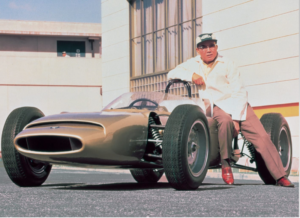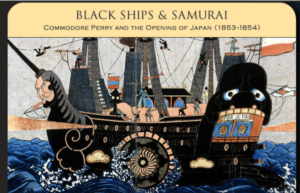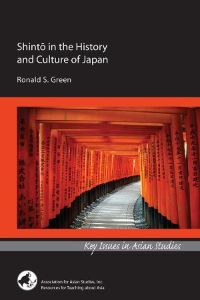Japanese, Americans, and Europeans: Consequential Intercultural Contacts

Three themes are hopefully evident in the recommended EAA teaching resources that follow. Individuals can exercise profound cultural international influence, be changed by other cultures, and teacher and student understanding of individual lives and the impact of cultural filters in creating new human actions and beliefs, constitute an important part of liberal education.
Although prior Japanese and Western interactions were significant, Japan’s range and depth of interactions with Westerners, and particularly Americans, intensified in the second half of the 19th century and has never abated.
Dan Métraux in American Visitors to Meiji Japan (Volume 19, Number 3, Winter 2014) provides biographical vignettes of thirteen American men and women who came to Japan, including missionaries, artists, politicians, educators, and writers. His profiles range from the nationally and internationally famous to individuals about who most readers will be unfamiliar. Almost all helped to change Japan and in a number of cases were profoundly influenced themselves by their experiences as visitors, or as residents of much longer duration in Japan’s Meiji Era (1868-1912). Those readers who enjoy this article might also search for Metraux’s articles on respectively, President Ulysses S. Grant (The Mikado, Guranto Shogun, and the Rhapsody of US-Japanese Relations in Early Meiji [Volume 11, Number 3, Winter 2006]), and author Jack London’s experiences in Japan (Jack London and the Yellow Peril [Volume 14, Number 1, Spring 2009]).
Long before the Meiji Period, private merchants and entrepreneurs existed in Japan but as readers will learn in John Sagers’ Shibusawa Eiichi and the Merger of Confucianism and Capitalism in Modern Japan (Volume 19, Number 3, Winter 2014), a profile of one of the most famous entrepreneurs in Japanese history, Shibusawa’s (1840-1931) story is anything but dull. His long career encompassed parts of four historical periods in Japanese history, but as a young man the future “J. P. Morgan of Japan” was profoundly changed through spending about a year in Europe (most notably at the Paris International Exposition). As the title implies, Shibusawa played a leading role in not only building Japan’s economy but helped to re-define education, was a major philanthropist, and thousands lined the streets in Tokyo for his funeral procession.
Jeffrey Alexander in Honda Sōichirō and the Rise of Japan’s Postwar Motor Vehicle Industry (Volume 20, Number 2, Fall 2015) introduces readers to Honda Sōichirō (1906-1991). The flamboyant creator of motorcycles, motorcycle racing teams, and Honda automobiles was just as unorthodox as Shibusawa. Honda changed not only Japan but Europe and the rest of the world, and was the living antithesis of the stereotypical, button-down, elitist Japanese corporate employee.
In Crooked Cucumber Comes to America (Volume 11, Number 3, Winter 2006), author David Chadwick, student of Shunryū Suzuki (1904-1971), tells the story of this obscure Japanese Buddhist priest who came to San Francisco in his mid-50s in 1959 and unintentionally became a counter cultural hero of sorts in the San Francisco of the 1960s. The 1970 publication of his lectures, the small book Zen Mind, Beginner’s Mind, remains a viable source of inspiration for many readers today.
Other Teaching Resources: Visualizing Cultures and Asia For Educators

Founded in the beginning of the digital education era by MIT Professors John Dower and Shigeru Miyagawa, accompanied by Lynn Parisi-authored complementary curricula, Visualizing Cultures, in the developers’ words, “weds images and commentaries in innovative ways to illuminate social and cultural history.” Although several units at the site are directly related to the themes of this issue, “Black Ships & Samurai,” with its photographs and paintings created by American and Japanese artists depicting US Commodore Perry’s “opening of Japan” in July 1853, is particularly recommended. The images, essays, and curriculum suggestions remain highly useful for instructors and students.
Asia for Educators, a digital initiative of the Weatherhead East Asia Institute at Columbia University and designed for high school (substantial content is also appropriate for middle schools) and undergraduate instructors and students in world history, geography, art, and literature, includes numerous teaching resources. One of the most appealing educational resources are the primary source documents with accompanying discussion questions. “Excerpts from the Autobiography of Fukuzawa Yukichi (1834-1901),” features the preeminent Japanese author who explained Western life styles, values, and institutions to the Japanese general public during the Meiji Period.
Explaining Japan’s Major Indigenous Belief System
Key Issues in Asian Studies: Shintō in the History and Culture of Japan by Ronald S. Green

Ronald S. Green did a superb job in introducing secondary school, college, and university instructors and students to Shintō—a belief system whose roots go back over 2,000 years.
ISBN: 9780924304910 (paperback). 108 Pages.
AAS MEMBERS: $12.00
NON-MEMBERS: $15.00
BUY NOW
This article was published as part of the January 2021 EAA Digest.

